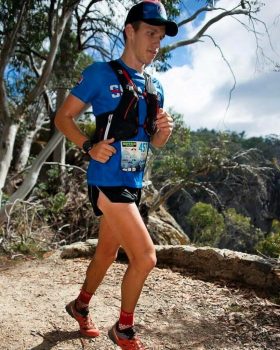Our 6 tips for where to focus your training and time when there’s less than 2 months to race day,
1) DROP THE BASE
The periodised macrocycle approach to training has had us endurance athletes dropping the base long before Skrillex was a thing.
Welcome to the Sharpening phase!
With 6-8 weeks remaining to race day it’s time to think about what changes you can affect. Developing your aerobic capacity takes years not weeks so as the sun sets on the ‘base phase’ we transition to less volume and an increased focus on strength, speed and specificity. The importance of ‘sessions’ should ramp up and the final ‘super Sunday’ long run should be completed 6-8 weeks prior to race day.
There is little point training super long in the sharpening phase and the fatigue inducing effect will only hinder your ability to train sharply through the remainder of the week.
With a month or so to go, we can’t really make you fitter, but we can make you stronger and faster. Time to turn aerobic capacity into speed!
2) NEED FOR SPEED!
Now is a great time to ramp up the speed work. Faster reps help develop strength and likely serve to tidy some movement biomechanics.
Ever heard the physio tell you to “engage your glutes”? Your gluteal muscles only operate when accelerating, or ascending (and as a deceleration motion when walking).
Is there climbing in your race? Engage your glutes! Speed work like surges or strideouts, intervals or hill sprints, bounds or repeats are an excellent way to wake up that sleeping posterior.
There are also numerous weighted or resistance exercises you could be working on to help isolate and apply stress to those primary running muscles – don’t forget your abductors!
 3) SPECIFICITY
3) SPECIFICITY
Generally, as we approach the target race the greater the emphasis should be on the specific components of the race. Whereas early training phases are about establishing ‘fitness’ and aerobic capacity, sharpening is about turning that dull knife into a precision instrument.
The closer we get to race day, the more prepared you should be for all the little bits that make your upcoming event unique.
Start by making the elevation normal. If the race has 1000m of climbing every 20km, make your 10km runs have 500m of vert.
Do you need to master stairs? Now is the time!
Give your easier runs to have a ‘race-like’ focus. Master running in the dark or think about terrain and surface specificity that you can simulate.
What equipment do you need to carry? Wear your race pack with all the race equipment so it’s not a surprise encumbrance on race day.
4) KGS COULD COUNT?
In your base-phase you were likely a carb-consuming monster. The need to maintain higher volumes of training would likely have had your body craving carb-dense deliciousness. With a reduction in training hours you should be mindful that your body needs a little less liver and muscle glycogen.
If you want to climb that hill a little faster, focus on eating well and presenting the best you to the start line. For most of us, a couple kgs less would be a wise move and the difference it’ll make on race day noticeable.
The increase in speed and strength training will also promote muscle adaptation only in the presence of protein so consider swapping that post workout ‘sanga’ for a protein shake, peanuts, or other high protein foods.
Shorter sharper sessions are also a great little EPOC boost and that ‘metabolic after-boil’ will help with calorie churn.
5) HEAD CHECK
Get your mind in the game. There’s as much as 20% untapped potential in you RIGHT NOW simply because the brain has a great way of ensuring you don’t push too hard. Make inroads into this self-preservation setting by working on your mental game.
- Create a mantra that you can repeat to yourself on race day. It can be as simple as “I am strong, I’ve trained for this” and be prepared to repeat it – a lot!
- Imagine yourself succeeding. If the next aid-station is still 5km away, imagine yourself rolling into it smiling at the plethora of offers available to you. Imagine the crowd cheering you on. Put yourself at different places in your race and think about what’s happening then and how good you’re going to feel.
- Fake it ‘till you make it. Smile no matter what. How you feel is your choice. Choose to feel good – no matter what.
6) TAPER
This is possibly one of the most over-thought aspects of training and preparation. Many athletes worry more about this than they do the actual training and race execution. The simplest explanation is that you should reduce training volume 20% per week in the final 2-weeks. The effects of tapering on performance, Bosquet et al.

